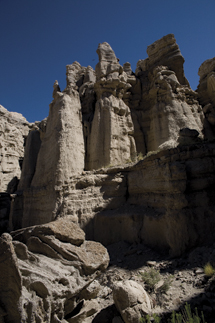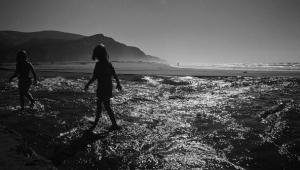Super High Contrast And “Tripod-Less” HDR
Super High Contrast And “Tripod-Less” HDR
High-Speed Brackets
by George Schaub
HDR stands for “High Dynamic Range”, which means that there are times when one exposure can not possibly capture the very wide range of light values in a scene. The eye compensates for high contrast by opening and closing the iris rapidly so signals to the brain can be integrated to take the scene in and reveal details in the highlights and shadows, but the camera can only expose for one brightness value at a time. The way around this is to simply make a number of bracketed exposures, and emulate what the eye does by integrating all those exposures into one record of the scene. This is all done with software after the fact.
One of the challenges of this type of shooting is making sure that each exposure has the same framing. If they are not aligned then there’s no way to properly get one shot from a number of exposures. Generally, this is done easily enough by mounting the camera on a tripod. There are times, however, when you might not have a tripod with you, and that’s when high-speed bracketing comes into play. Many cameras now have shutter speeds that go up to as fast as 1/2000 second, and that’s the speed you should use (and even faster if you have it available.)
1 HDR  |
2 HDR  |
|
3 HDR
 |
||
|
||
Set up the shot using Shutter-Priority so your bracketing will draw from aperture settings. Make sure that you have enough light and/or ISO sensitivity to get that high a shutter speed for the shot. Include one exposure where the brightest areas are fully exposed—in other words, no “blinkies” on playback. Then make at least two exposures that ensure that the shadows will record, which will overexpose the highlight areas considerably. You then use software to combine the shadow and highlight reading images.
Tools: Shutter-Priority Exposure mode, Highlight Warning Playback mode, HDR software (Photoshop, Photomatix Pro, etc.)
These photos were made in bright sunlight at high altitude amongst white formations, a nearly impossible lighting situation to capture in one frame. Exposing for the highlights (1 HDR) makes the shadows extremely deep, while exposing for the shadow areas (2 HDR) burns out the highlights. To compromise the two shots are combined using software that both retains texture in the highlights and detail in the shadows.
Settings: Bracketed exposures at very high shutter speed to maintain framing when shooting handheld. Shutter Priority Exposure mode, 1/2000 second at ISO 400 (used to boost shutter speed.) (1 HDR) f/14, (2 HDR) f/5.6. Exposures combined using Photoshop HDR software (3 HDR).











































